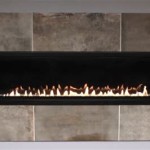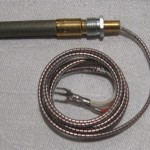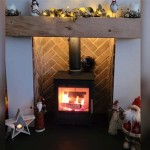Rock Fireplace Mantel: A Timeless Statement of Hearth and Home
The fireplace has long served as the focal point of the home, a gathering place for warmth, relaxation, and connection. The mantel, perched above the firebox, provides a stage for personal expression and decorative elements. Among the diverse materials used for mantels, rock stands out for its enduring quality, natural beauty, and ability to evoke a sense of rustic elegance. A rock fireplace mantel is more than just a functional component; it's a statement piece that brings the outdoors in, imbuing the living space with character and history.
Choosing a rock fireplace mantel involves careful consideration of several factors, including the type of rock, the style of the mantel, the overall design of the room, and the installation process. This article delves into the various aspects of rock fireplace mantels, providing comprehensive information to inform and guide homeowners in making the right choice for their homes.
Understanding the Allure of Rock Mantels
The appeal of a rock fireplace mantel stems from its inherent connection to nature. Each piece of rock is unique, bearing the marks of geological processes that have unfolded over millennia. This individuality translates into a mantel that is unlike any other, adding a distinct and personalized touch to the home. Unlike manufactured materials, rock possesses a natural variation in color, texture, and pattern, creating a visual richness that is both captivating and enduring.
Beyond its aesthetic qualities, rock is a remarkably durable material. It can withstand high temperatures, making it an ideal choice for a fireplace mantel. Properly sealed and maintained, a rock mantel can last for generations, becoming a cherished heirloom passed down through families. The weight and solidity of rock also contribute to a sense of permanence and stability, grounding the fireplace and anchoring the room.
Furthermore, a rock fireplace mantel can complement a wide range of architectural styles, from rustic cabins and farmhouses to modern and contemporary homes. The versatility of rock allows it to be incorporated seamlessly into various design schemes, adding a touch of natural beauty and understated luxury. The inherent texture of the rock contrasts beautifully with smoother surfaces, creating visual interest and depth within the room.
Exploring Different Types of Rock for Fireplace Mantels
The world of rock offers a diverse palette of options for fireplace mantels, each with its own unique characteristics and aesthetic appeal. The choice of rock will significantly influence the overall look and feel of the fireplace and the surrounding space. Here are some popular types of rock used for fireplace mantels:
Fieldstone: Fieldstone is a term used to describe naturally occurring, irregularly shaped rocks found on the surface of the ground. These rocks often feature a variety of colors and textures, reflecting the geological history of the area. Fieldstone mantels typically evoke a rustic and informal aesthetic, perfect for cabins, cottages, and homes with a natural or country-inspired design. They are often left in their raw, unshaped state, showcasing their inherent beauty and character.
Limestone: Limestone is a sedimentary rock composed primarily of calcium carbonate. It is known for its light color, smooth texture, and relatively soft nature. Limestone mantels often have a refined and elegant appearance, making them suitable for more formal living spaces. They can be easily carved and shaped, allowing for intricate detailing and customized designs. The light color of limestone also helps to brighten up the room and create a sense of spaciousness.
Granite: Granite is an igneous rock formed from the slow cooling of magma beneath the earth's surface. It is renowned for its hardness, durability, and resistance to heat. Granite mantels often have a polished, sophisticated look, making them a popular choice for contemporary and modern homes. Granite comes in a variety of colors and patterns, ranging from light grays and whites to dark blacks and browns. Its strength and durability ensure that a granite mantel will withstand the test of time.
Slate: Slate is a metamorphic rock formed from shale under intense pressure and heat. It is characterized by its fine-grained texture, layered structure, and natural clefting. Slate mantels often have a distinctive and elegant appearance, with a subtle sheen that adds to their visual appeal. Slate is also relatively easy to cut and shape, making it a versatile option for customized mantel designs. Its dark color and smooth surface create a sense of sophistication and refinement.
River Rock: River rock consists of rounded, smooth stones that have been naturally shaped by the flow of water in rivers and streams. River rock mantels typically evoke a relaxed and natural aesthetic, perfect for homes with a casual or bohemian vibe. The smooth texture of the rocks is pleasant to the touch, and their varied colors and sizes add to their visual appeal. River rock mantels can be constructed using individual stones mortared together or by encasing a solid core material with river rock veneer.
Designing Your Rock Fireplace Mantel: Style and Dimensions
The design of a rock fireplace mantel should complement the overall style of the room and the existing fireplace. The size and dimensions of the mantel should be proportional to the size of the fireplace opening and the surrounding wall space. Careful consideration should be given to the mantel's height, depth, and length to ensure a balanced and harmonious aesthetic.
Mantel Style: The style of the mantel can range from simple and understated to elaborate and ornate. A simple rock slab mantel, with a clean and minimalist design, is well-suited for contemporary homes. A more traditional mantel may feature intricate carvings, corbels, and other decorative elements. A rustic mantel might incorporate raw, unshaped rocks, showcasing their natural texture and character. The choice of style should reflect the homeowner's personal preferences and the overall design aesthetic of the room.
Mantel Height: The height of the mantel is an important consideration from both a functional and aesthetic perspective. Building codes typically specify minimum clearances between the top of the firebox opening and the bottom of the mantel to prevent overheating and potential fire hazards. Generally, a distance of at least 12 inches is recommended for non-combustible mantels, while combustible mantels may require greater clearances. The height of the mantel should also be visually appealing, allowing for comfortable viewing of the fire and providing adequate space for displaying decorative items.
Mantel Depth: The depth of the mantel refers to the distance it projects outward from the wall. A deeper mantel provides more surface area for displaying decorative items, such as picture frames, vases, and candles. However, a mantel that is too deep can overwhelm the fireplace and make the room feel smaller. The ideal depth of the mantel will depend on the size of the fireplace and the overall dimensions of the room. A general guideline is to choose a mantel depth that is proportional to the height and width of the fireplace opening.
Mantel Length: The length of the mantel should be sufficient to span the width of the fireplace opening and extend slightly beyond the side edges of the firebox. This helps to create a balanced and aesthetically pleasing look. The length of the mantel can also be influenced by the architectural style of the room. In some cases, the mantel may extend the full width of the wall, creating a dramatic focal point. In other cases, a shorter mantel may be more appropriate.
Installation and Maintenance of Rock Fireplace Mantels
Installing a rock fireplace mantel is a task that requires careful planning, precision, and expertise. Due to the weight and bulk of rock, professional installation is often recommended, especially for larger and more complex mantels. Improper installation can lead to structural instability, safety hazards, and aesthetic flaws. Following are some considerations for installation and maintenance.
Installation: The installation process typically involves attaching the rock mantel to the wall using a combination of mechanical fasteners and adhesive mortar. The type of fasteners and mortar will depend on the type of rock, the weight of the mantel, and the construction of the wall. A solid and stable foundation is essential to ensure that the mantel can safely support its own weight and any decorative items placed on it.
Before installation, it is important to verify that the wall is structurally sound and capable of supporting the weight of the mantel. If necessary, the wall may need to be reinforced with additional framing or support. Accurate measurements and precise alignment are crucial to ensure that the mantel is level and properly positioned. Gaps between the mantel and the wall should be filled with mortar and sealed to prevent moisture intrusion and air leaks.
Sealing and Protection: Once installed, a rock fireplace mantel should be sealed to protect it from moisture, stains, and other forms of damage. The type of sealant will depend on the type of rock and its porosity. A penetrating sealant is typically recommended for porous rocks, such as limestone and sandstone, while a surface sealant may be appropriate for denser rocks, such as granite and slate.
Cleaning and Maintenance: Regular cleaning is essential to maintain the beauty and appearance of a rock fireplace mantel. Dust and debris should be removed regularly with a soft brush or vacuum cleaner. Spills and stains should be cleaned up promptly with a mild detergent and water. Avoid using harsh chemicals or abrasive cleaners, as these can damage the surface of the rock. Periodic resealing may be necessary to maintain the protective barrier and prevent staining.
A rock fireplace mantel is a timeless investment that can enhance the beauty, character, and value of any home. Choosing the right type of rock, designing the mantel to complement the room's style, and ensuring proper installation and maintenance will result in a stunning focal point that will be enjoyed for generations to come.

Diy Mantel Over Lava Rock Fireplace Stone Makeover Fireplaces

34 Beautiful Stone Fireplace Ideas That Rock Bring The Rusticity Home Remodel Makeover

Barnwood Fireplace Mantel The Collection

How To Build And Hang A Mantel On Stone Fireplace Shanty 2 Chic

Rock Fireplace With A Winter Mantel 001 Funky Junk Interiors

65 Best Stone Fireplace Design Ideas To Ignite Your Decor Stacked Fireplaces Designs

50 Sensational Stone Fireplaces To Warm Your Senses

Part Ii The Most Gorgeous Stone Fireplace Mantels Ever Laurel Home

Fireplace Wishes And Mantel Dreams Beth Bryan

Custom Built Fireplace Surround Install A New Mantel Hearth
Related Posts








